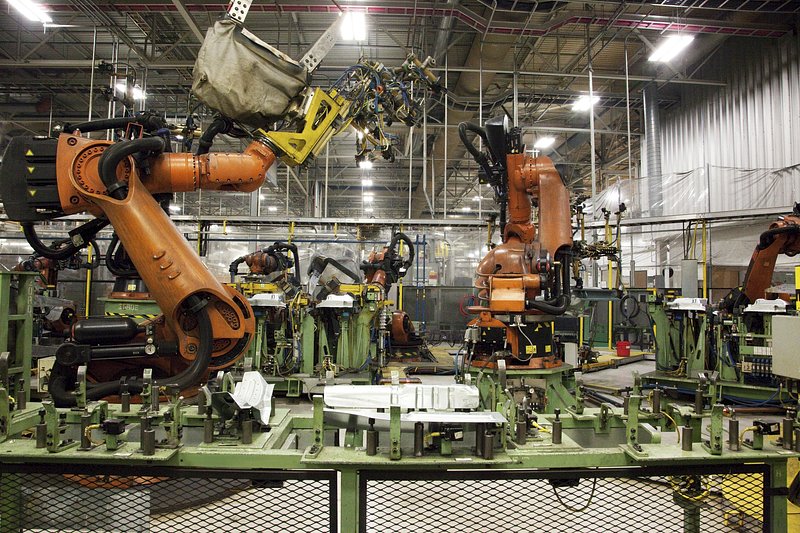In an era where technological innovation leaps forward at an unprecedented pace, robotics has emerged as a significant force of change, often surrounded by the narrative of job displacement. Yet, beneath the surface of automation and artificial intelligence lies a compelling story of human empowerment, collaboration, and augmentation. This article delves into the heart of robotics, exploring how these technological marvels are enhancing lives and reshaping work for the better, rather than merely replacing human roles.
Robotics: A Catalyst for Human Empowerment
At its core, the integration of robotics into our daily lives and workplaces is not a tale of replacement but one of enhancement. From healthcare to education, manufacturing to disaster relief, robotics is playing a pivotal role in improving outcomes, safety, and efficiency. The narrative is gradually shifting from job displacement to job transformation, as robots take on repetitive, dangerous, or physically demanding tasks, allowing humans to focus on more complex, creative, and interpersonal activities.
Healthcare: A Prime Example of Augmentation
In healthcare, robotic assistance in surgeries has become increasingly common, enabling precision and control beyond human capability alone. These robotic systems aren’t replacing surgeons but rather augmenting their abilities, resulting in less invasive procedures, reduced recovery times, and improved patient outcomes. Similarly, robots designed for companionship and care are providing solace and support to the elderly and those with special needs, enriching lives with companionship and enabling caregivers to allocate more time to personal interaction and care quality.
Education and Special Needs: Robots as Facilitators
Educational robotics introduces young minds to programming and engineering concepts, fostering creativity, problem-solving skills, and a love for learning. For children with autism, robots have been used as teaching aids, offering consistent, patient, and engaging interactions that help in developing social and communication skills. These applications highlight robotics’ role not in supplanting educators but in enriching the educational experience.
Disaster Relief: Robots to the Rescue
In disaster-stricken areas, where the environment is too hazardous for human responders, robots have been instrumental in search and rescue operations, delivering aid, and assessing damage. By taking on these roles, robots help preserve human life, allowing human teams to strategize and intervene where they’re most needed, showcasing the potential of human-robot collaboration in saving lives.
The Workforce Evolution: Shifting Skills and Opportunities
The introduction of robotics into the workforce has sparked fears of job loss, but the reality is more nuanced. As robots assume routine tasks, new jobs are created in programming, maintenance, and supervision of these robotic systems, leading to a shift in skill sets rather than a net loss of employment. Moreover, this shift encourages a focus on soft skills—creativity, empathy, and interpersonal communication—that are uniquely human and irreplaceable by machines.
Redefining Work: From Task to Talent
The presence of robots in industries such as manufacturing and logistics is prompting a redefinition of work itself. Employees are moving away from monotonous, manual tasks to roles that require decision-making, management, and technical skills. This transition represents not a reduction in jobs but a transformation toward more meaningful and fulfilling work, where human talents are valued over the ability to perform repetitive tasks.
The Future of Work: Collaboration and Coexistence
Looking ahead, the future of work is not a battleground between humans and robots but a landscape of collaboration. The concept of cobots (collaborative robots) is already taking hold in various sectors, designed to work alongside humans within shared spaces safely. These cobots exemplify the potential for human-robot teams to accomplish more together than either could alone, heralding a new era of productivity and innovation driven by synergy rather than competition.
Conclusion
The human side of robotics is a narrative of enhancement, empowerment, and collaboration. As we navigate the complexities of integrating robotics into our lives and workspaces, the focus must remain on leveraging these technologies to augment human abilities and improve the quality of life. Far from replacing jobs, robotics is transforming the workplace, creating new opportunities for human ingenuity and compassion to flourish. The journey ahead is not without challenges, but by embracing robotics as a partner rather than a rival, we can pave the way for a future where technology and humanity advance hand in hand.

